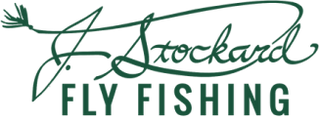Guest Blogger & Fly Tyer: Bo Wentworth of Pennsylvania, Find Bo @: https://www.instagram.com/bo_wentworth/
The flies that I tie are made out of necessity, the necessity to create art, and the necessity to create fishable flies. Sometimes both of those driving forces combine and align, The All Night Diner is a great example of this. Named after one of my favorite Modest Mouse songs, The All Night Diner is fun to tie and an effective dry fly. This pattern is a great example of how the tying art flies leads to new techniques for effective fishable patterns. I first tied this pattern late at night on a long project fly using a VKsteelworks hook.
I tied a parachute post and added a few goose biots for extra dimension and aesthetic appeal on the back of a salmon fly. The idea then came to me to add goose biots in various colors onto the parachute post for added visibility. Being able to use multiple colors like pink, orange, yellow, and blue on the same post allows the angler's eye to pick up the differentiating color easier than a solid color post. Though a solid color is certainly easier to tie, the All Night Diner is easier to see deeper into the night.
The flies pictured are tied with moose mane, but can be tied with any body material or dubbing to match whatever insect you are trying to replicate. The goose biots on the abdomen of the fly are tied to match the post for aesthetic appeal, but when I fish this fly I will match those biots to the body material. The thorax is composed of peacock herl and can be substituted for any other material of your choosing. The parachute post pictured shows my use of a calf tail, which is a favorite material of mine wrapped in whiting farms hackle.
How to Tie the All Night Diner Parachute Emerger
Material List
Tying Steps
Step 1: The Hook
Place your hook in the vice and tie in your thread. It is important to get a nice even thread base so later our moose mane body will lay flat and even on the hook shank. On this pattern my favorite thread to use is Semperfli Nano Silk 18/0 in white.
Step 2: Parachute Post
The First material we are going to apply is the calf tail post. Take a clump of white calf tail about as long as the hook shank and lay down on top of the hook with the ends facing forward. A couple of secure wraps and trim of any excess hairs on the back end. Next wrap slowly around your clump of calf tail to orient it vertically to make your parachute post. I take a small amount of Solarez Thin Hard to the post at this point to make it a little stiffer to easily wrap our hackle later on.
Step 3: Moose Mane Body
Take two strands of moose mane one white and one black and align them so their tips are the even. Lay them down on the side of the hook shank facing towards you and slowly wrap them down with your thread. Return your thread back up the shank to the point that your calf tail has been seated. Slowly wrap your two strands of moose mane up the shank until you reach your thread and secure it down with a couple of solid wraps. This material is relatively brittle and if you are having difficulties with it breaking or cracking it can help to soak it in warm water for a few minutes before using it. For some more info on working with moose mane check out a detailed discussion on my website. Applying a uv resin over this material will help it stay in place and last longer on the water. For this application my favorite resin by far is Solarez Bone Dry.
Step 4: Thorax
Select two goose biots of any color of your choosing. For aesthetics I will match these biots to the ones we later use for the post. Tie them in right where your moose mane body ends and secure them with a few steady wraps just as you would on a pattern like a prince nymph. Next take two pieces of peacock herl and tie them in and return your thread to the eye of the hook. Wrap your peacock herl forward to the eye, whip finish and cut your thread.
Step 5: Parachute Post
Adjust your vice so it is face towards you and your fly is oriented horizontally. This allows us to take the time and easily tackle this post. Now select your goose biots of any color and begin adding them to your post. I like to add one on each side first and then the back and front. As you add each biot be mindful of their orientation, and trim the bottoms off and make sure the post is staying clean for our next step of adding our hackle.
Step 5: Hackle
Select your hackle and prepare to attach to your post. The size and color of your hackle is up to you, and there are some amazing colors to experiment with from Whiting Farms. Strip off a small amount on the side that will be wrapping around the post to keep the post looking clean. Wrap your hackle down your posty and tie it off close to the bottom of your post. A careful whip finish to not trap any fibers down and cut your thread.










